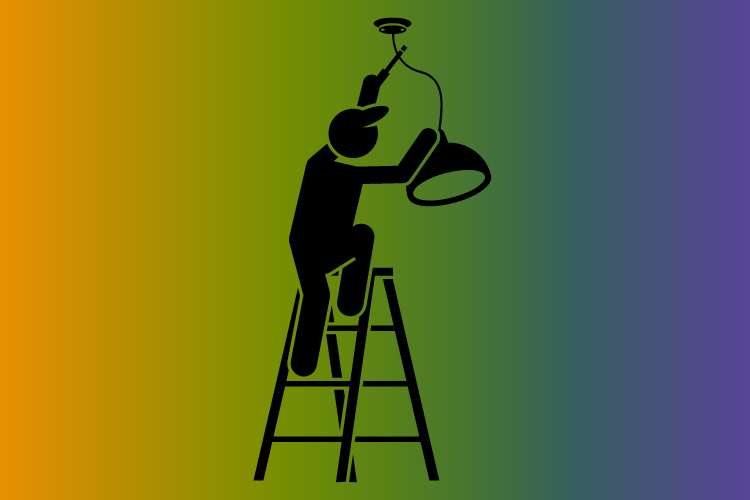Lighting is one of the most important elements of any home, but is something we often pay little attention to, living with the same sort of lighting for years on end.
However, changing the look and type of lights you have in a room can alter the feel of the space completely.
Although some basic DIY skills are required, changing a ceiling light is not a tricky job and it can be undertaken by even novice DIYers.
Safety First
Changing a light fitting is not dangerous, but when dealing with electricity the first consideration should always be safety.
Before going near the lights or any other aspect of the electricity supply, get to know your fuse box.
Most modern houses will have a box which allows you to isolate certain circuits, so you can switch off all of the lights without having to turn off the fridge or oven too.
Always switch off the electricity when working with lights as electric shocks can kill.
Getting Started
Once you have made sure the electricity supply is safe by shutting it off at the fuse box and testing the wires with a circuit tester, get up the step ladder and unscrew the circular plastic ceiling rose to expose the wiring.
Unscrew the existing light from the wiring and discard it.
Many modern lighting fittings have very similar connections, and if the light you are replacing is relatively modern, the job may be as simple as unscrewing one lot of wiring and screwing in the replacement in exactly the same position.
If this is the case, the job will take just a few minutes.
Complicated light fittings
Lights fittings are generally sold with full instructions on how they should be fitted, and take time to read these properly before getting the tool box out.
Most light fittings will use a flex core, which is a small connector box which the wires are screwed into to join them.
These are usually clearly marked to indicate what wire should go where.
If in any doubt call in an electrician or call the manufacturer of the light fitting to double check.
Wiring standards in the UK changed in 2006, so if you are replacing a light installed before that date, the wiring colours may be different in the new and old light.
Whereas before the wires were blue, red and green and yellow, the modern standard is to use brown, black and grey.
Finishing
Once the wires for the light have been securely fixed into place, tuck any loose cable up into the ceiling space to make sure it cannot be seen, then screw the light fitting into place, making sure it is flush with the ceiling and there are no gaps.
If the light fitting is a different shape to the light which was there previously, you may have to paint the ceiling to cover up any patchiness.
Switch the electricity supply back on and enjoy the effect given to the room by your fabulous new lighting.
